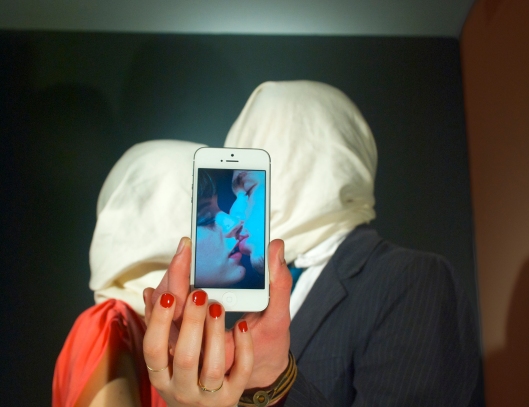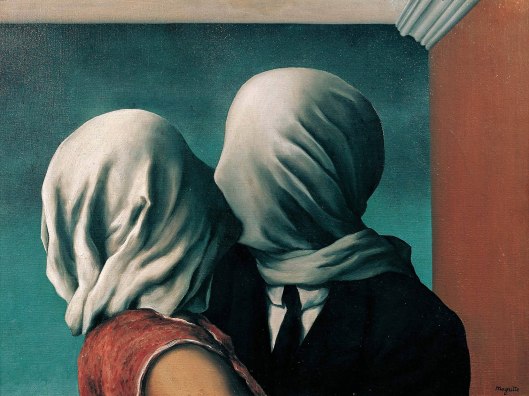Tags
Apple, Apple Product, iphone, Les Amants, magritte, MOMA, surrealist, The Lovers, The Son of Man

Kim Tran’s The Lover, 2013. Print on Canvas, 50cm x 70cm. London.

Rene Magritte’s, Les Amants [The Lovers] 1928. Oil on canvas, 21 3/8 x 28 7/8″ (54 x 73.4 cm) MoMA, New York
Why is there a barrier in the first place, and why do we want still want it? In his The Son of Man, Magritte has an apple in front of a man’s face, creating this feeling of curiosity to see and to know who is hiding. Magritte talks about how the hidden evokes an interest that the seen cannot evoke in the same way. Today, we do the same, holding Apple products in front of our faces; and many times, our “friends” find our status updates more interesting then our physical presences.

Rene Magritte’s The Son of Man, Oil on Canvas, 1964. 116 cm × 89 cm (45.67 in × 35 in) Private Collection.
Next click here. Or go back to the first. The Treachery of Images The Lovers The Future of Statues


Pingback: It’s Technically Magritte | Ktran
Pingback: The Treachery of Images | Ktran
Pingback: The Future of Statue | Ktran